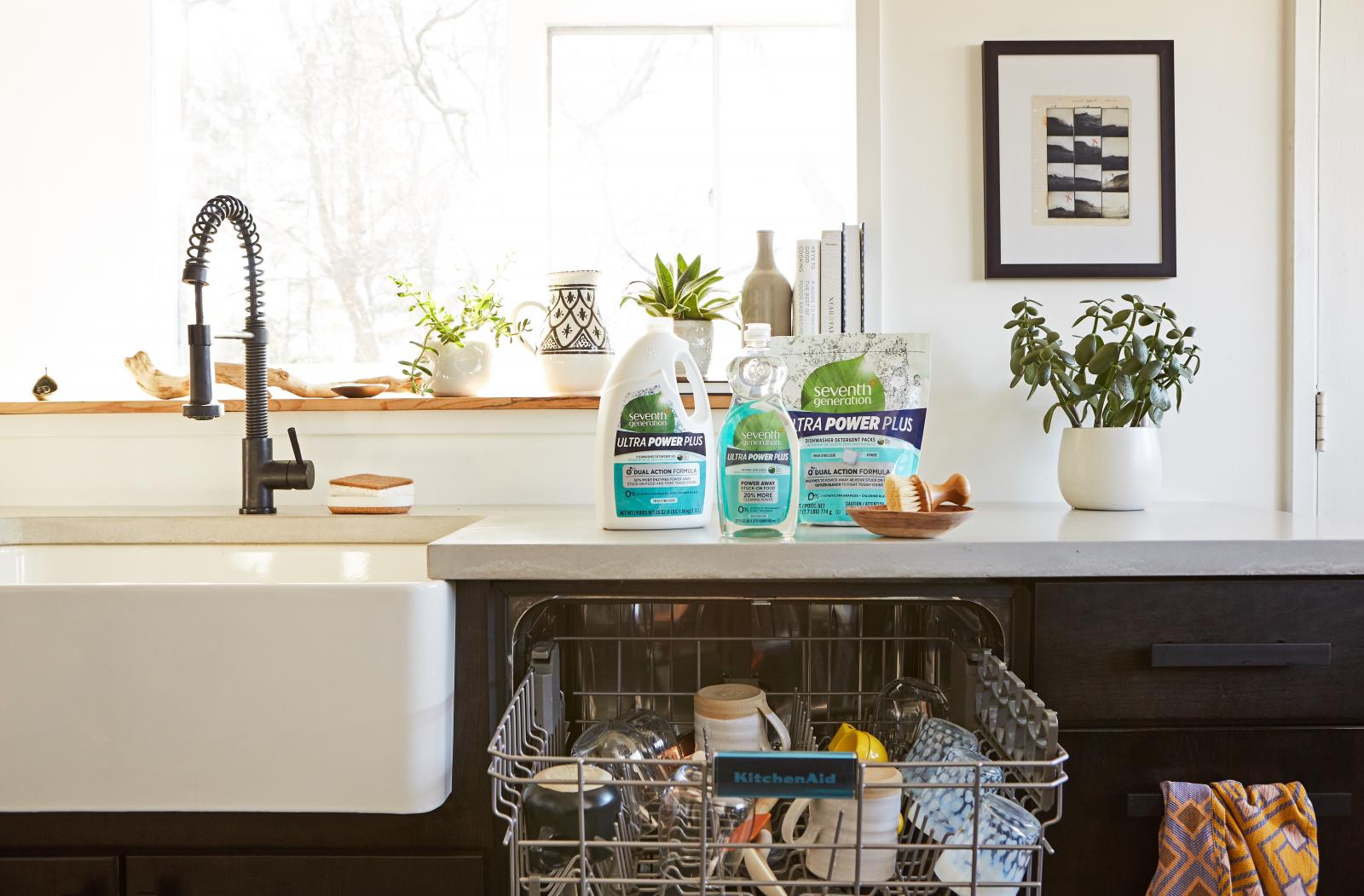Creating a healthy home is a journey. There are a lot of possibilities to consider, and you won't get there overnight. We recommend taking it slow, and choosing the options that best fit your family, your lifestyle and your budget. Every action you take will help you Protect Planet Home!
To help you get started, we've created three lists of ideas: Light Green are easiest to do. Dark Green require more of a commitment. And Deep Green mean you are in for the full ride. Keep in mind that Light Green ideas can have as much impact as those on the Deep Green list.
Light Green Steps to a Healthy Home
- Dust with a damp cloth to ensure that household dust, the final resting place of many toxins that enter our homes, is removed and not stirred back into the air.
- Open windows and doors occasionally (even in winter!) to bring in fresh air and rinse out pollutants that have accumulated inside.
- Look for deodorizers or other air "freshening" products that list their ingredients on the product label. Some ingredients in air sprays, like propane and butane, and contribute to poor indoor air quality.
- Conduct a radon test. Radon is an odorless natural radioactive gas that seeps into homes from surrounding soil. A simple test can tell you if your home needs abatement measures.
- Look for personal care products and make-up products that do not contain parabens.
- Wash bedding frequently to remove dust and allergens.
- Look for "fragrance free" cleaning and personal care products if anyone in your home has allergies or sensitive skin.
- Establish screen-free bedtime routines to create healthy sleep habits.
Medium Green Steps to a Healthy Home
- Eat more organic food. Organic food is grown without synthetic pesticides. Organic food also helps promote biodiversity.
- Ask guests to remove their shoes upon entering your home. From pesticides to pollutants, shoes can track unwanted visitors into your home.
- Clean and inspect combustion devices like furnaces, stoves, and hot water heaters to make sure they're functioning properly and not venting hazardous gases into your home.
- Have your water tested for chemicals pollutants like pesticides and chlorine. Install a filter on drinking water taps if pollution is found.
- Buy a vacuum cleaner with a HEPA filter. These special filters trap particles that regular vacuums can't catch.
- If you buy soft vinyl products, including toys and shower curtains, make sure they don't contain phthalates ("thal-ates"), toxic chemicals that easily leach.
- Remove any permanent press, easy-care, wrinkle-free, and/or flame-resistant linens and fabrics that are less than one year old and don't buy new ones. They are most likely treated with the chemical formaldehyde, which slowly escapes during the first year of use.
- If your home was built before 1978, test painted surfaces for the presence of lead. Conduct the same tests on your child's toys.
- Conduct an indoor air quality test to see if any toxic gases, including formaldehyde or vapors from VOCs, are being emitted by your home furnishings.
Dark Green Steps to a Healthy Home
- Don't buy home furnishings or fixtures made from particleboard or other pressed wood products. These can emit dangerous fumes over time. Choose solid wood instead.
- Choose naturally- or low-impact dyed natural fiber carpets and textile products, and use natural flooring for your home. These products won't introduce any chemical additives to your environment.
- Become a "localvore" by eating foods grown within 100 miles of your home. Organic or not, such foods have the lowest overall impact on the environment.
- Clear out the clutter. Crowded, exposed shelves are dust magnets that collect a disproportionate share of the toxins present in your home. Display your favorite items behind glass instead.
- Replace synthetic foam mattresses with beds made from untreated cotton, wool, and other natural fibers, and glue-free solid woods.
- Take the same step with other home furnishings. Synthetic foams and treated textiles are one of the chief sources of toxic flame retardants.
- Replace your lawn with natural landscaping that provides valuable habitat for your local flora and fauna.
- Wear naturally-dyed natural fiber clothing and keep synthetic materials, colors, and treatments away from your family's skin.
- Swap all your non-stick cookware for cast iron. Properly seasoned cast iron will provide much the same results and won't leach perfluorochemicals or toxic fumes.
- Express yourself. Let public officials, corporate leaders, and other decision-makers know how you feel about local, national, and global issues.


